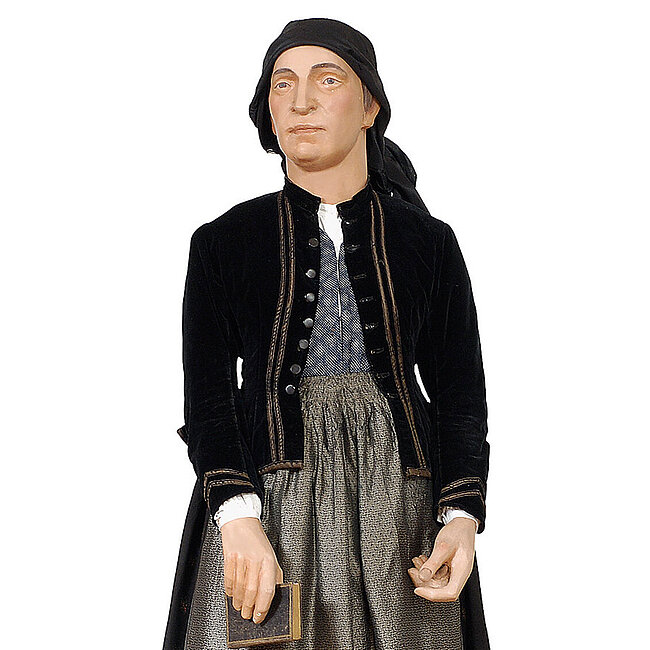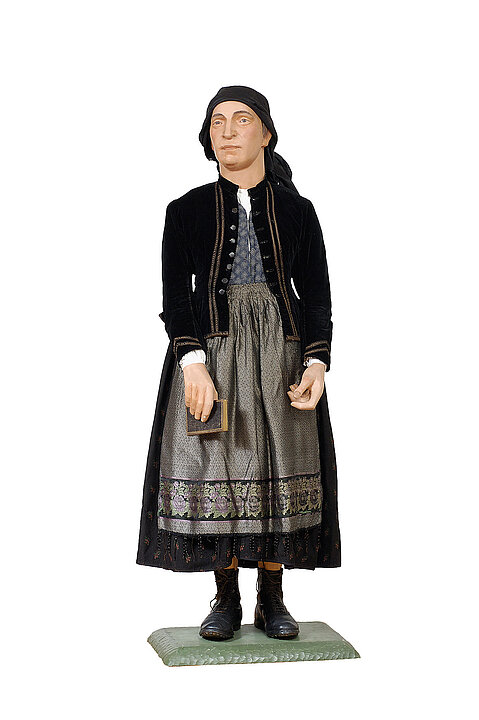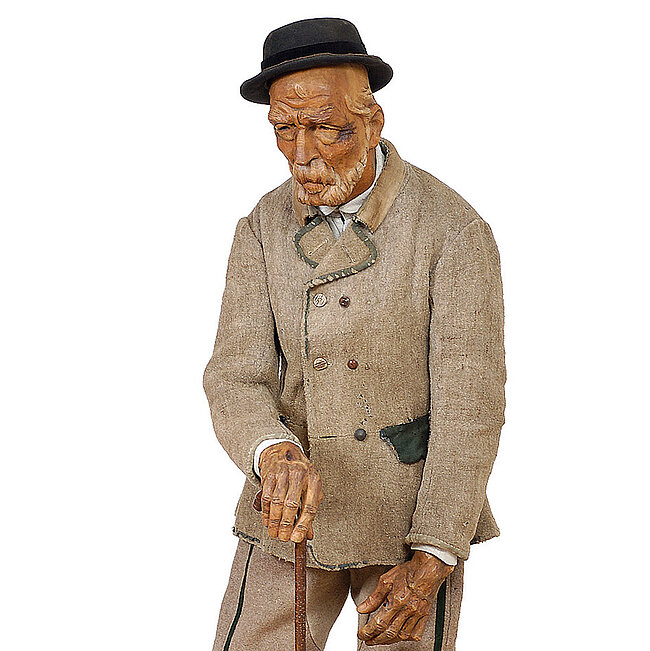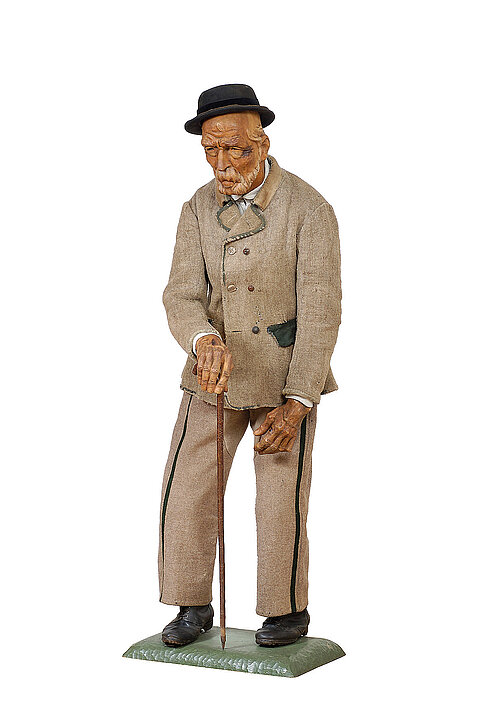Until recently, this figure wore a black silk headscarf tied at the back, as was common in Upper Austria, the Salzkammergut and the Upper Enns Valley from the second half of the 19th century. In her right hand she held a prayer book. In combination with the garments purchased by the museum in the 1910s and earlier—a woollen skirt with silk apron, a patterned bodice and a velvet spencer—she represented a wealthy woman in clothes for high days and holidays.
Since 2022, the Schladming Woman has worn a fashionable hat in the colours and (unofficial) logo of the Folk Life Museum, and in her left hand she holds a source of energy in the form of an energy gel. These are contemporary objects that point to change and transformations in fashion and lifestyle. Her face, a mirror, invites us to look into ourselves: Where between tradition and modernity would you locate yourself?

























